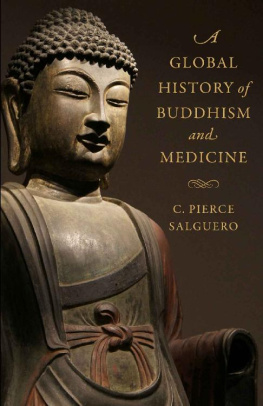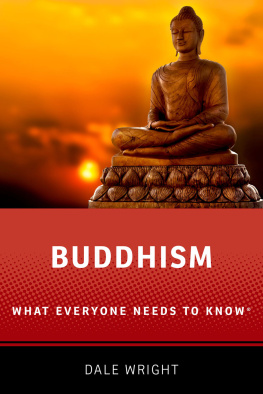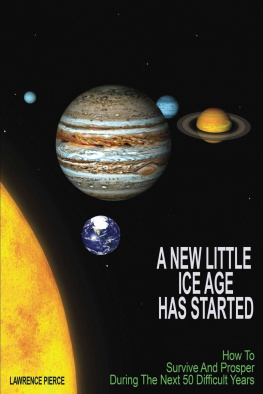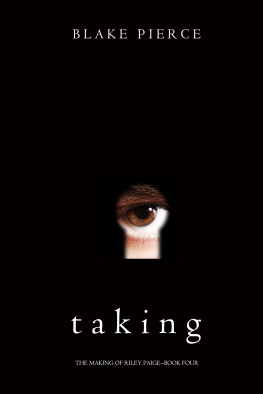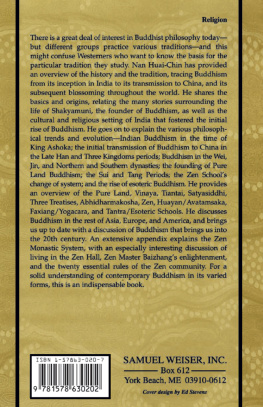A GLOBAL HISTORY OF
BUDDHISM AND MEDICINE
A
GLOBAL HISTORY
of BUDDHISM and
MEDICINE
C. Pierce Salguero
Columbia University Press New York
Columbia University Press
Publishers Since 1893
New YorkChichester, West Sussex
cup.columbia.edu
Copyright 2022 Columbia University Press
All rights reserved
EISBN 978-0-231-54607-2
Library of Congress Cataloging-in-Publication Data
Names: Salguero, C. Pierce, author.
Title: A global history of Buddhism and medicine /
C. Pierce Salguero.
Description: New York : Columbia University Press, 2022. |
Includes bibliographical references and index.
Identifiers: LCCN 2021015087 (print) | LCCN 2021015088 (ebook) |
ISBN 9780231185264 (hardback) | ISBN 9780231185271
(trade paperback) | ISBN 9780231546072 (ebook)
Subjects: LCSH: MedicineReligious aspectsBuddhism.
Classification: LCC BQ4570.M4 S25 2022 (print) |
LCC BQ4570.M4 (ebook) | DDC 294.3/3661dc23
LC record available at https://lccn.loc.gov/2021015087
LC ebook record available at https://lccn.loc.gov/2021015088
A Columbia University Press E-book.
CUP would be pleased to hear about your reading experience with this e-book at .
Cover image: Statue of Bhaiajyaguru from Unified Silla, late 9thearly 10th century
(photo by the author, used with permission from Gyeongju National Museum)
Cover design: Lisa Hamm
Contents
I t may be a clich to say that scholarship is a collaborative endeavor, but this book, and the project of which it is a part, literally could not exist if it were not for my colleagues. The purpose of this project has been to forge a new subfield of study that is collaborative and interdisciplinary from the ground up. The two anthology volumes that preceded this book included works by eighty-eight contributors, who have taught me much about various aspects of Buddhist medicine as the project came together over the course of seven years. The present volume, the final one in this series, represents my attempt to synthesize those contributions and conversations. It is a vision of how these various pieces fit together and speak to one another. My intention here is to introduce an overarching narrative that connects my colleagues contributions to the anthologies with their specialized publications elsewhere, and with as much of the academic work on Buddhist medicine that has been produced by other scholars as possible. Of course, I have also integrated into this story my own scholarship, which primarily concerns Buddhist medicine in medieval China, modern Thailand, and contemporary United States. However, the primary purpose is to highlight the connections between all of our work. I am extremely grateful to all of the participants in this endeavor for their collaboration. And also to Wendy Lochner at Columbia University Press for believing in the project and supporting it all along.
My thinking about Buddhist medicine has been fundamentally shaped by frequent conversations about various aspects of this subject with both Michael Stanley-Baker and Bill McGrath, who continually have both challenged and educated me and for whose friendship I am deeply appreciative. I am additionally indebted to Bill as well as Ronit Yoeli-Tlalim for reading through full drafts of this manuscript, at which time they made many substantial and insightful suggestions. David Carpenter and Amy Langenberg also provided comments on significant portions of the manuscript. I am also thankful for the many other project contributors who read portions and made comments and corrections that have improved this book. These include Anna Andreeva, James Bae, Don Baker, Kin Cheung, Clark Chilson, Cline Coderey, Jo Cook, Susannah Deane, Ed Drott, Douglas Duckworth, Ann Heirman, Alex Hsu, Assunta Hunter, Anthony Irwin, Ben Joffe, Dhivan Jones, Benedetta Lomi, Dan Lusthaus, Andrew Macomber, Alex McKinley, Nathan Michon, Jonathan Pettit, Volker Scheid, Gregory Scott, Nathan Sivin, Michael Slouber, Dominic Steavu, Michele Thompson, Robban Toleno, and Katja Triplett. Other people who contributed at various points in the making of this bookwhether knowingly or notinclude Ann Gleig, Ira Helderman, and Dominik Wujastyk. To all of you, I am grateful.
T he health benefits of Buddhism are being talked about everywhere. Thanks to the meteoric rise in the global popularity of mindfulness meditation as a stress-reduction technique, it now seems entirely normal to associate Buddhism with better mental health. The English-language popular media report breathlessly on how it helps you to navigate the anxieties of modern life. Regular attendance at classes, workshops, and retreats is now de rigueur among the high-powered economic and cultural global elite.
It is not just meditation, however: a whole spectrum of Buddhist therapies are ubiquitous parts of primary health care in traditionally Buddhist cultures in Asia. These include the therapeutic herbs prescribed by a Buddhist healer in a mountain village in Bhutan, for example, the prayers for health and longevity offered by a group of devotees in a temple in downtown Tokyo, and the protective talisman worn by an expectant mother in Thailand. Countless other healing and health-seeking behaviors such as these are being performed by many of the estimated 400 to 600 million Buddhists alive today around the world.charity, prayer, ritual, vegetarianism, and compassion in response to the novel coronavirus (COVID-19) pandemic, finding solace and solutions in the Dharma for this global catastrophe. If we look at the history of Buddhist engagements with health and healing, we will discover even more practices, ideas, and connections with health over the past twenty-four centuries or so that Buddhism has been on the planet.
The primary motivation of this book is to situate our contemporary fascination with therapeutic meditation within this larger global and historical context. I will show that the interconnections between Buddhism and medicine have a fascinating history as old as Buddhism itself. As we will see, Buddhism and medicine have been closely intertwined since the very beginning of the tradition and have continued to develop together over the course of nearly two and a half millennia leading up to the present moment. But, as we will also learn, this relationship has undergone considerable change over that time.
Owing to the constraints of space, it is not possible to tell every detail of the entire history here. (Indeed, that story is so immense that it would actually be impossible to portray in a book of any length.) Rather, the idea here is to make a useful, if reductive, summary of the larger patterns, major themes, and broad strokes of the study of Buddhist engagements with medicine. Because it is a very general map of the territory, this book is not intended to be read in isolation. Rather, it is intended to provide an entry point for the rich, more detailed materials in its two companion volumes: Buddhism and Medicine: An Anthology of Premodern Sources and Buddhism and Medicine: An Anthology of Modern and Contemporary Sources, published by Columbia University Press in 2017 and 2019, respectively.
The current book refers to those two volumes on a frequent basis (abbreviated as {1} or {2}, followed by a chapter number and optional subsection number). It does so particularly when a translation of a text or an interview with a practitioner is illustrative, adds depth, or brings nuance to the general overview provided here. The anthologies also provide essential context from the history of Buddhism, the history of medicine, and the many cultures and traditions mentioned in passing in this volume. Even more detail is provided in reading recommendations and endnotes appearing after each chapter throughout the three-volume series. All of these materials are intended to work together to provide readers with a comprehensive understanding of the subject matter.





